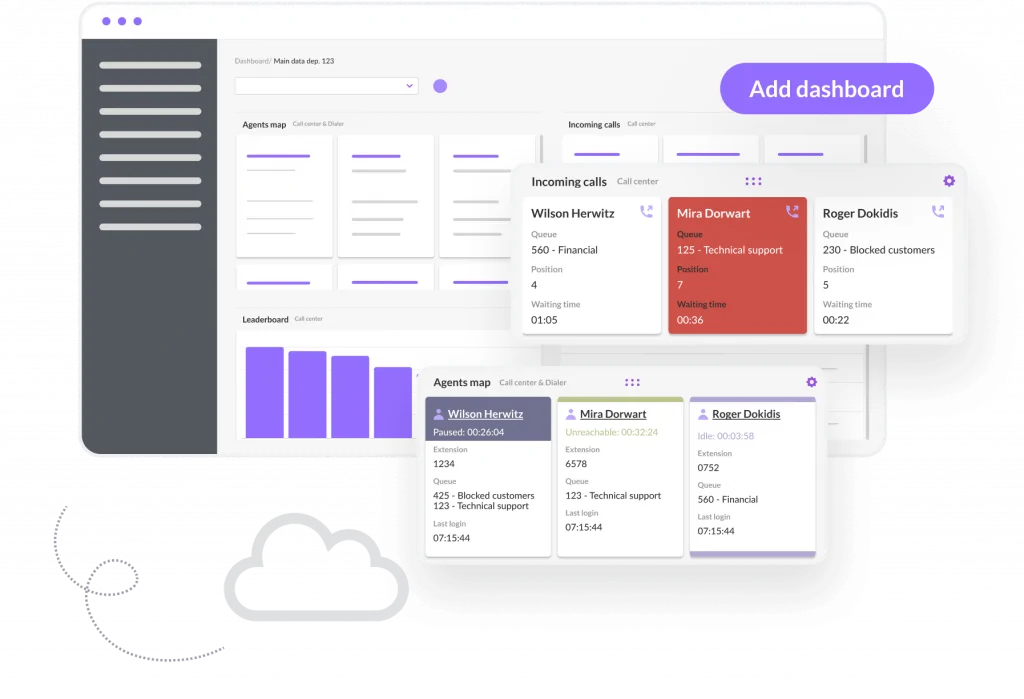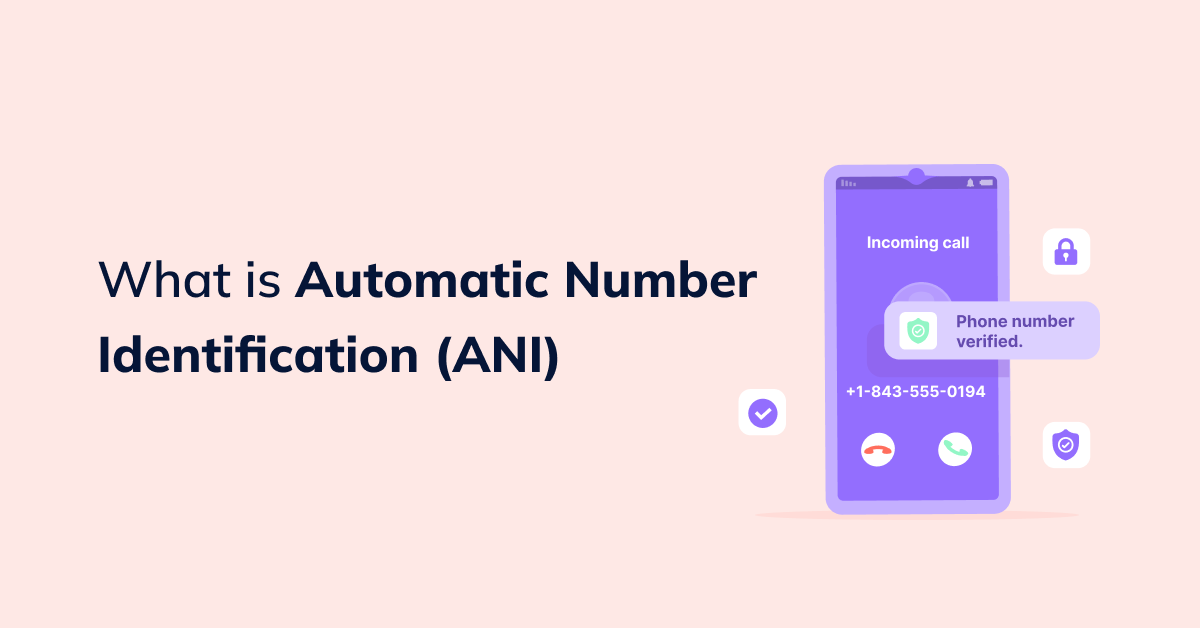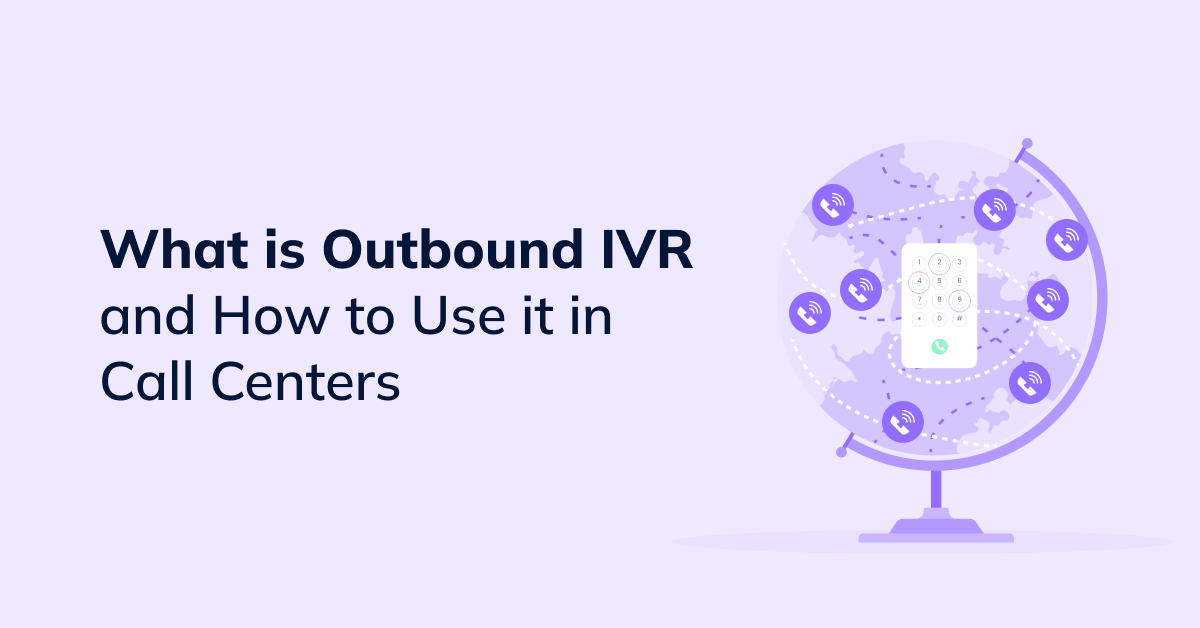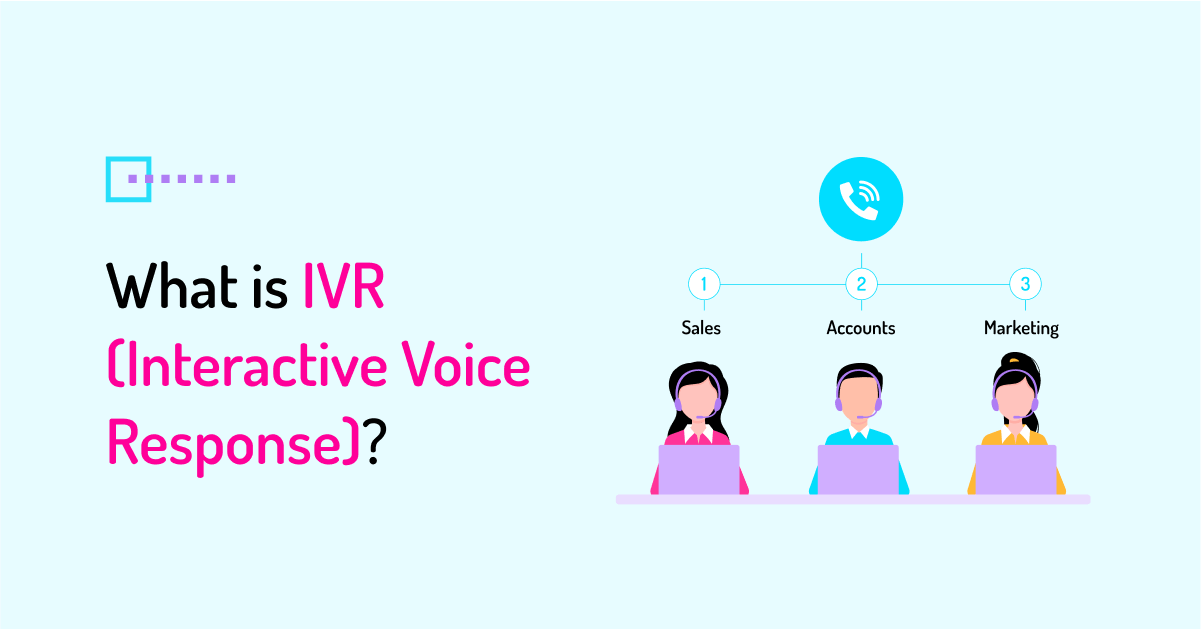In inbound call centers, the more information agents have about callers, the better customer service they can provide to them, ensuring high levels of customer satisfaction. Along with other call center technologies, Automatic Number Identification service helps call centers identify incoming callers and route calls appropriately, enabling call center agents to serve customers faster and more efficiently while also delivering the level of personalization consumers have come to expect.
What is Automatic Number Identification (ANI)?
Let’s start with ANI meaning in a call center. Automatic Number Identification (ANI) is basically a feature of a telecommunications network that enables the recipient of a call to capture the number of anyone making a call without having to ask for the phone number data manually. To put it simply, it tells you who is calling you.
Originally, ANI was developed and implemented by the AT&T corporation for billing purposes – internal long-distance toll call charging, to be more specific. With the introduction of the ANI technology, telephone operators no longer had to manually request origin numbers of incoming calls from telecommunications network providers.
Automatic Number Identification systems are beneficial to many industries, such as emergency services, but they are primarily used in call centers and contact centers. When a customer initiates an incoming call to a call center, ANI automatically identifies the caller and displays the number of the calling party to an agent.
ANI might seem similar to what is known as Caller ID. While Automated Number Identification systems and Caller ID do the same thing – the technology behind them is different. And unlike Caller ID, ANI cannot be blocked by the caller, meaning the receiving party of the call always gets accurate information.
ANI vs. DNIS
DNIS (stands for Dialed Number Identification Service) is another technology involved in identifying the details of incoming phone calls. While call center ANI tells you what number the call came from, DNIS tells you which phone number was dialed to initiate the call. Together with other technologies used in call centers, DNIS also helps route incoming calls more effectively, ensuring customers get quick and efficient support.
That can be useful in cases where a call center has dozens or even hundreds of numbers associated with specific locations, different product lines, or marketing campaigns. DNIS ensures call center agents know exactly which number a customer or a prospect dialed, enabling inbound contact center software solutions to route callers to the right destination.
Benefits of Using ANI in Call Centers
Let’s now take a look at the key benefits of using ANI in contact center and call center environments:
Rapid inbound caller identification
One of the most obvious benefits of using ANI in call centers is the ability to instantly identify incoming calls through the caller’s telephone number. This way, Automatic Number Identification helps call centers automate and streamline the process of caller identification, eliminating the need for agents to do it manually.
That is particularly helpful in the banking industry. For example, when a customer initiates a call, ANI becomes part of the process of validating a customer’s account. Based on ANI and the caller’s input from IVR, the bank’s call center system would retrieve the information from the customer database and check the incoming number against the customer’s details, helping to quickly validate the caller.
More efficient call routing
Along with other call center technologies and tools, such as Automatic Call Distributor (ACD), call routing, and Interactive Voice Response (IVR), ANI helps route incoming calls more efficiently. If callers hide their caller ID accidentally or choose to do it on purpose, they might not be routed correctly. With ANI, incoming calls get routed more accurately, ensuring fewer call transfers, shorter Average Handle Times (AHA), better First Call Resolution rates, and improved Customer Satisfaction Scores (CSAT).
E.g., if you have pre-configured call routing rules based on specific customer numbers, that can help you quickly identify high-value accounts, prioritize them, bypassing call queues, and route them to the most relevant agents. That enables you to deliver VIP-level support to high-value customers, ensuring higher levels of customer satisfaction.
Another example is when a business has customers from various parts of the country or even the world. Based on ANI and other technologies, the call center service provider identifies an area code or a country code and routes each call to the appropriate department or the team of agents responsible for serving customers from that particular territory without having to transfer calls back and forth until the caller reaches the right destination.
More personalized customer support
ANI plays a crucial role in helping agents deliver more personalized service to customers. If your call center software is integrated with your CRM (Customer Relationship Management) system through Computer Telephony Integration (CTI), ANI helps identify incoming callers correctly and automatically display each caller’s information on the agent screen via screen pops without agents having to search for customer information manually in the CRM.
Screen pops provide agents with all the available information about each caller, including their number, name, previous interactions with the company, and more, even before an agent accepts the call. Being able to instantly access all the details about the customer without having to ask them to recap the previous interaction enables a call center agent to deliver a more personalized customer experience and reduces handle times.
E.g., VoiceSpin’s call center software integrates with 50+ most popular CRM systems, including Zoho, Salesforce, HubSpot, and Pipedrive, among others. When an incoming call comes in, the system automatically identifies phone numbers and retrieves the caller’s information from the CRM system, empowering agents to handle customer calls faster and more efficiently while personalizing each interaction.
Instant fraud prevention
Fraud prevention is another example of using Automatic Number Identification in a contact center environment. If you get frequent scam calls in your call center, you can use ANI to flag phone numbers known for conducting fraudulent activity and ensure these calls are not getting through to your team. Moreover, by monitoring ANI data in real time, you can spot unusual calling patterns or anomalies, such as an increased number of calls coming from specific regions or particular numbers. That might also indicate potential fraud attempts, so you can investigate these issues further and take the necessary steps.
Other Technologies Used in Call Centers to Improve Customer Experience
Automatic Call Distribution (ACD)
Automatic Call Distribution (ACD) systems enable call centers to handle large volumes of incoming calls more effectively by distributing calls fairly among agents, helping managers balance the workload for their team members. With ACD, inbound calls are distributed automatically based on the call routing rules that you set, so your agents don’t have to do it manually. Automatic Call Distribution technology is the backbone of modern inbound call center software systems.
Call routing
Paired with ACD, call routing is the fundamental technology used in inbound call centers to route incoming customer calls to the most appropriate destination. Call routing software systems may provide different options for routing calls. For example, with geo-based call routing, you can route customer calls to the appropriate departments or teams of agents based on the caller’s geographic location. With skill-based routing, you can route incoming callers to agents with the most relevant skill set and expertise, ensuring that customer calls are handled quickly and efficiently, improving your First Call Resolution rates.
Interactive Voice Response (IVR)
In addition to ACD and call routing, Interactive Voice Response systems can further improve customer experience by routing calls even more efficiently. An IVR system interacts with callers via a series of voice prompts, navigating them through various menu options and helping them reach the designed destination. Besides that, IVR helps call centers capture additional information from callers, such as their account number, the purpose of the call, or preferred language, allowing for more accurate call routing. IVR systems help call centers eliminate multiple call transfers, reduce handle times, increase FCR rates, and improve the experience for callers.
Call queuing
Call queueing is another essential technology used in call centers to streamline and improve the process of handling customer calls. When a customer calls in, and there are no available agents to pick up the call immediately, the call queuing software system places the call in the corresponding call queue. While waiting on hold, the caller may hear hold music or pre-recorded messages informing them of their place in the queue and the estimated wait times. The callers may also be offered a queue callback option, enabling them to hang up and receive a return call from an agent once they reach the front of the virtual call queue, so they don’t have to waste their time waiting on hold.
How to Start Using ANI in Your Call Center

To start using Automatic Number Identification and deliver a more personalized experience to your callers, you need call center software that supports this technology. With VoiceSpin’s contact center software, you can easily identify incoming callers and route their calls in the most efficient way through ACD, call routing, and IVR. And in case of large call volumes, you can configure call queues and offer your customers a queue callback option, ultimately reducing the number of abandoned calls and improving the experience for your callers.
In addition, you can integrate your call center software with the CRM system of your choice (both pre-built and custom integration options are available) to ensure your agents always get immediate access to each caller’s details, empowering them to personalize each interaction and improve CX. Book a demo call to see how it works.





 +18889082995
+18889082995
 +442036084160
+442036084160
 +97237237006
+97237237006